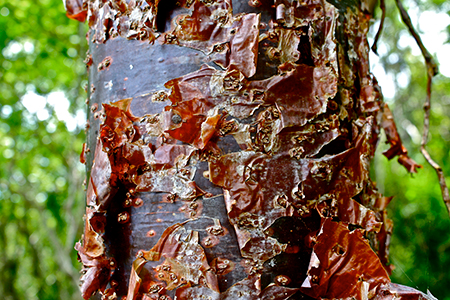Scientific Name: Bursera simaruba
Botanical family: Burseraceae
Common names: Nude Indian – Jiñocuabe
 The intense colors of its bark that range in shades of green, orange and coffee and the detachment of its bark in the form of paper (exfoliation) indicate to us that we are in presence of our tree of the month of August, the Nude Indian (El Indio Desnudo) or Juñicuabe.
The intense colors of its bark that range in shades of green, orange and coffee and the detachment of its bark in the form of paper (exfoliation) indicate to us that we are in presence of our tree of the month of August, the Nude Indian (El Indio Desnudo) or Juñicuabe.
It is commonly found as part of live fences on farms, in pastures and in secondary forests of the central and northern pacific coast of Costa Rica. The Nude Indian is a medium-sized tree with aromatic leaves and bark. As mentioned, a very striking aspect in this species is its red colored bark which falls off in thin slices or sheets, similar to when our skin peels after a strong sunburn.
But in addition, it is a species traditionally used as a natural medicine to cure diseases such as diarrhea, dysentery, ulcers, thyroid among others. The Nude Indian also has important ecological contributions since its fruits are consumed by the white faced monkey (cariblanco) , the congo or howler monkey, the squirrel or titi monkeys and a wide variety of birds such as tucancillos, oropéndolas, yiguirros, woodpeckers, among others.






